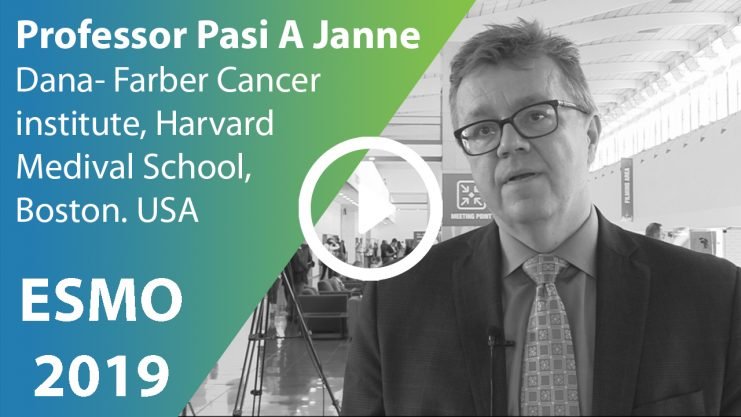Advertisment
CAR-T cells and bi-specific agents

Developing CAR-T cells that are effective in solid tumours is challenging but experience in Hodgkin Lymphoma could pave the way for CAR-T cells in lung cancer. Bi-specific T-cell engagers (BiTEs) could also be a useful strategy to improve the effectiveness of immunotherapy.
Written by Christine Clark.
CAR-T cells are T-cells that have been engineered to express chimeric tumour antigen receptors on their surface. They were originally developed for treatment of liquid tumours and the move to solid tumours presents three major challenges, explained Professor Gianpietro Dotti (University of North Carolina, US). They are: selection of the right antigen, ensuring T-cell migration to and infiltration into the tumour and tackling a tumour environment that is very immunosuppressive. A large number of antigens are now being explored in connection with CAR-T therapy in solid tumours.
Ideally, a suitable antigen would have limited expression in normal tissues, limited intra- and inter-tumour heterogeneity of expression on the surface of tumour cells and the antigen would be essential for tumour growth and metastasis. The B7-H3 antigen (a member of the B7 family, like PD-L1) is of interest. It acts mostly as an inhibitory receptor, has limited expression in normal tissues and is highly expressed in solid tumours (including pancreatic, ovarian and colon cancers). B7-H3 CAR-T cells have been shown to control lung cancer in orthotopic animal models and will be tested in human ovarian cancer next year.
Hodgkin lymphoma (HL) provides a model for the transition to solid tumours because it behaves in many ways like a solid tumour, with a highly immunosuppressive tumour micro-environment. CD30 is universally expressed in HL and anaplastic large cell lymphoma (ALCL) but has only minimal expression in normal tissues. As a result there is little likelihood of “on-target, off-tumour” toxicities, explained Professor Dotti. Targeting CD30 with brentuximab vedotin has been effective in CD30-positive lymphomas. Early clinical use of a CD30-specific CAR was undertaken without lymphodepletion (which is essential). Nevertheless, it showed that the drug was clinically effective and had no significant toxicity. Fludarabine is a key part of the lympho-depleting treatment because it supports the ideal cytokine milieu – raised levels of interleukin 7 (IL7) and interleukin 15 (IL15) – that drives the expansion of CAR T-cells; cyclophosphamide alone does not have the same effect, he said.
The CAR.CD30-T cells were tested in the “worst possible relapsed/refractory HL patients”. A robust production process has been developed that enables production of CAR.CD30 -T cells in about 17 days. Of 37 patients treated, nine developed mild cytokine release syndrome (CRS) that resolved spontaneously and 17 developed a skin rash – because keratinocytes are also CD30-positive, explained Professor Dotti. A total of 21 patients achieved an objective response (CR or PR).
The incorporation of the chemokine receptor CCR4 has improved the homing ability of the CAR-T cells. CCR4 is the receptor for thymus- and activation-regulated chemokine (TARC) that is produced in Hodgkin Reed-Sternberg cells. CAR-T cells that co-express CCR4 and CD30 have improved migration and anti-tumour activity. A feasibility study in three patients with HL yielded promising results.
The next step will be overcoming tumour immunosuppression. This could involve combining CAR-T cells with checkpoint inhibitors, the use of agents targeting tumour macrophages or myeloid-derived suppressive cells and oncolytic viruses. Further engineering of CAR-T cells to counteract immunosuppressive factors could be another strategy, commented Professor Dotti.
Bi-specific agents
The mechanisms by which tumours escape the host immune system are numerous, complex and overlapping, said Dr Marina Garassino (National Cancer Institute, Milan, Italy). One therapeutic approach that is being actively researched is the use of bi-specific agents – at present some 85 agents are in development, she continued.
Normal T-cells recognise tumour cells displaying MHC class 1 with tumour peptides and lyse them. However, this mechanism fails if MHC class1 is not present on the cell surface. Bi-specific T-cell engagers (BiTEs) are targeted at both the T-cell, through CD3, and the tumour cell and can therefore bring the two together. The advantage is that BiTEs can be targeted at tumour-associated antigens and overcome immune evasion strategies such as loss of MHC Class 1 on the tumour cell surface.
Some examples of BiTEs that are in development include:
A phase 1 study of AMG 757, a BiTE that targets delta-like ligand 3 (DLL3) on tumour cells is under way in patients with small cell lung cancer. Pre-clinical studies suggest that AMG 757 triggers lysis of tumour cells and proliferation of T-cells.
FS118 is a BiTE that targets both PD-L1 and lymphocyte-activation gene 3 (LAG-3). It has the potential to overcome PD-L1 mediated compensatory upregulation of LAG-3 induced by single agent checkpoint blockade (in animal models).
MEDI5752 is a novel BiTE that preferentially targets CTLA4 on PD-1 expressing T-cells (i.e. tumour infiltrating lymphocytes). It effectively tethers the two receptors and leads to internalisation and degradation of PD-1 receptor. This is a different mode of action compared with PD-1/CTLA4 monoclonal antibody combination therapy and is expected to be less toxic. It is less potent on PD-1-ve (resting) T-cells. It is now being evaluated in a Phase 1 clinical trial.
BiTEs might also provide a way of delivering drugs to otherwise inaccessible compartments, said Dr Garassino. This could be through a so-called piggybacking approach where one arm of the BiTE targets a surface binding protein that, for example, delivers molecules to the lysosomal compartment and the other arm carries the cytotoxic drug.





